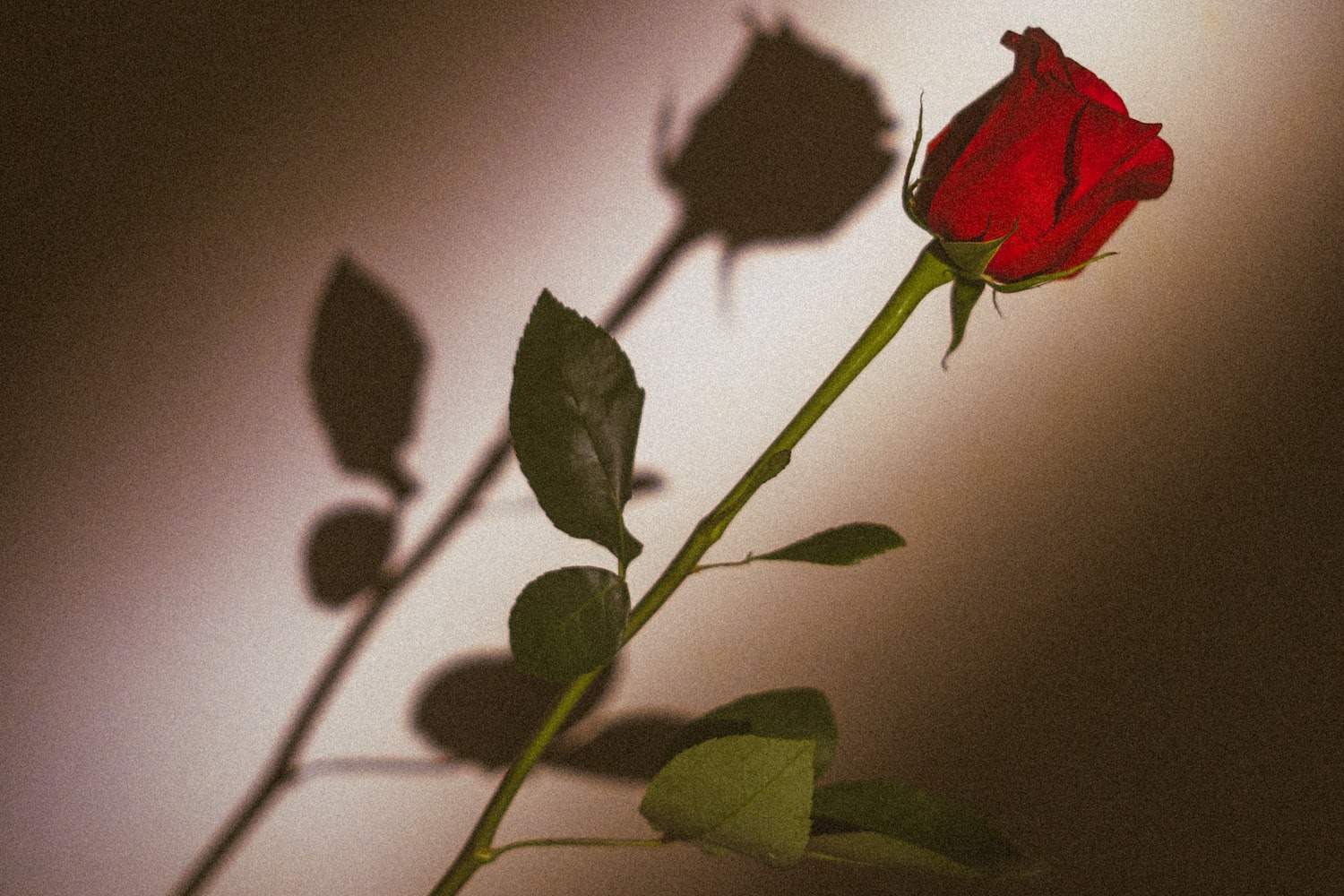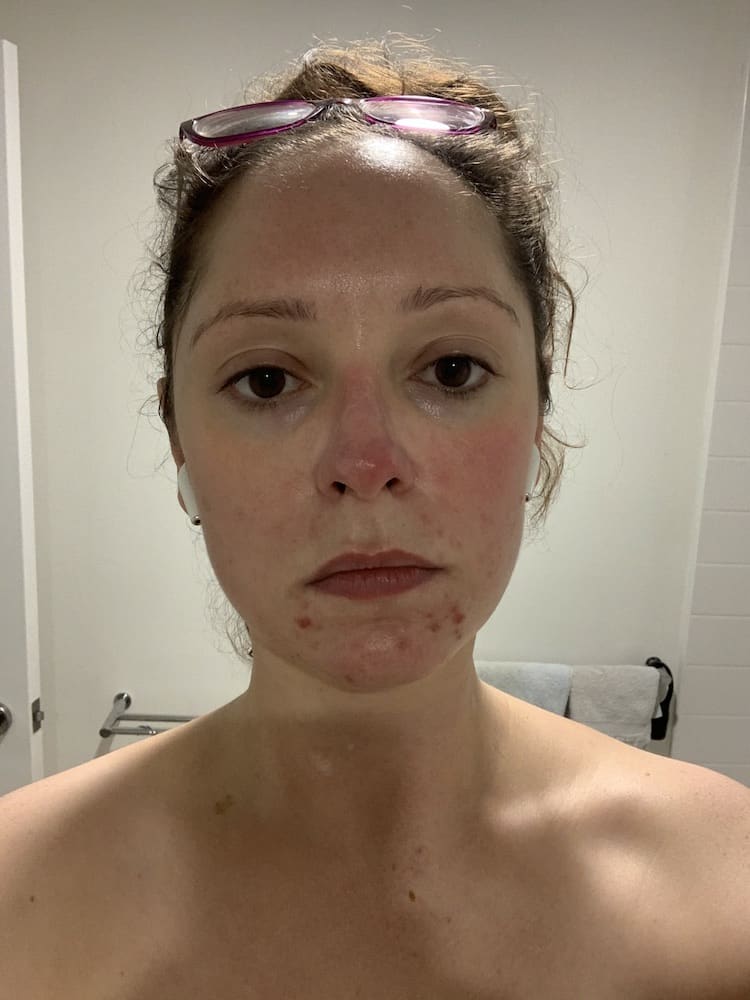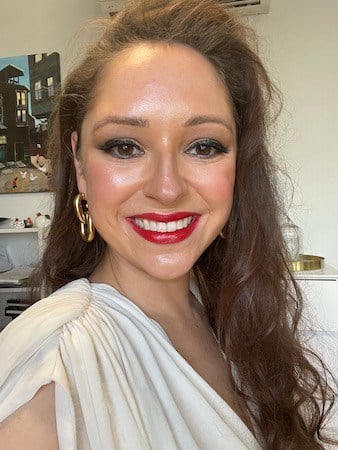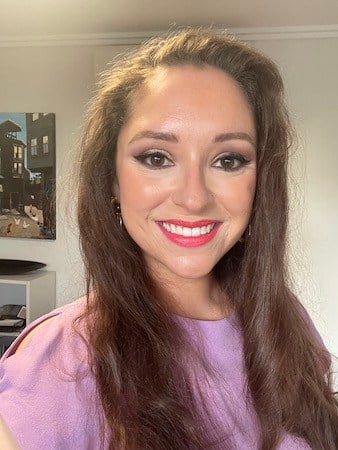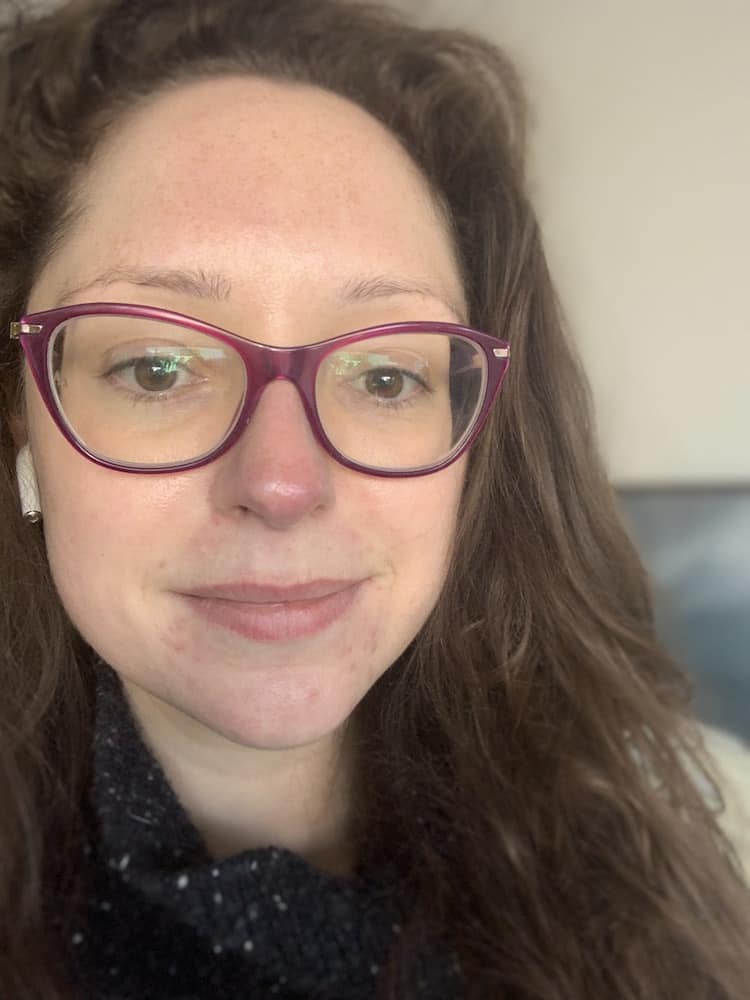Being a beauty writer is truly a dream. I get to interview all sorts of amazing people, and five years in, it is still a joy to be sent every conceivable new product to test. Such a wonderful job does come with strings attached, though. Primarily in the form of great (skin) expectations, namely ‘if you make a living by researching how to have the best possible skin, and telling others how to get it, then yours better be’. Well, consider me the ‘beauty insider with perfect skin’ myth buster, then, because, like an estimated 400 million people around the world, I have rosacea. It can be a confusing and embarrassing condition, no matter your day job, and it certainly makes mine harder. There is an upside, though, if the unusual intersection of my skin and my work may make managing your own rosacea easier. In short – my face’s reaction to all of my product guinea pig-ing? Bad. And yet, if it means said guinea pig has found what makes her skin happy, and may make yours happy? Good!
WHAT IS ROSACEA (AND DO YOU HAVE IT)?
Well, it’s complicated. We don’t know exactly what causes it, or why some people get certain symptoms but not others, and it’s very possible to have rosacea without even realising it (yep, that’s me!). Dr Belinda Welsh, a derm with twenty years’ experience treating problematic skin, talks us though the basics: “rosacea is an inflammatory facial skin condition that exists on a spectrum and has a number of signs and symptoms. The most common one is persistent redness and flushing over the nose, cheeks and chin, owing to increased blood flowing through dilated blood vessels. Others include tissue thickening (often of the nose), skin dryness, stinging or swelling, noticeable capillaries, and papules and pustules.” A lesser known though “still common” element is ocular rosacea, which Dr Welsh notes “can take the form of eyes feeling gritty or dry, and stinging and watering.” All in all? Delightful.
This, my friends, is called a flare up. Note the inflamed spots on my chin and persistent redness, always particularly noticeable on my nose and cheek
SKINCARE SAVIOURS
Once diagnosed, which took years from when I first displayed symptoms, The Great Testing O’ Rosacea-Friendly Products began. My biggest takeaway? When your rosacea tells you it doesn’t like something, believe it. It’s not a good idea to ever ‘just push through’ when you have a skin condition.
What I avoid
I didn’t do much purposeful testing of what would likely make rosacea worse, for obvious no-please-no-am-scared reasons. Plus, we already know the main culprits to avoid for sensitive skin, namely, anything ‘too active’.
- I originally completely cut out acids, and don’t use physical exfoliants anyway. Now, I can occasionally delve into the gentlest AHA (lactic) and spot treat blemishes with BHA (salicylic). I have used azelaic acid for consistent stretches without issue, though haven’t noticed much improvement from it.
- I have ditched vitamins A and C in topical form.
- I largely stay away from essential oils. Synthetic fragrances are fine for me.
- Subjecting my skin to the friction required to remove heavier products isn’t helpful, so I avoid most balm and cream cleansers, which have to be removed with a wash cloth.
What I welcome
I have always plumped for extensively researched and well-understood ingredients over ‘natural’ or ‘clean’ ones. Rosacea hasn’t changed this mindset, but it has strengthened it. Ingredients like mineral oil are ‘basic in a good way’, extremely unlikely to cause irritation and, most importantly, they help repair and maintain your skin barrier, an essential component in the management of rosacea.
Cleansers
Vela Days Lipid Complex Cleansing Balm – all oil cleansers are not created equal. This gets rid of every last skerrick of makeup and SPF, but emulsifies to a milk and rinses away, without needing to be scrubbed off. If I’ve been wearing heavy makeup, I do sometimes (very gently) use a soft cotton washcloth, to help it along.
CeraVe Hydrating Cleanser – simple, affordable, no fragrance, not drying, never stings. I use this to do a second cleanse or a morning cleanse.
Bioderma Sensibio H2O Micelle Solution – a top contender for my all-time must-have product for sensitive skin. Apply with a cotton pad, sweep over the face, then gently rinse. I like this for a morning cleanse, or to use as my sole cleanser if my skin is very upset.
Garnier Micellar Reusable Eco Pads – the best. Not only more eco-friendly than throw away cotton pads, but softer and fluffier.
Essences and serums
Dior Hydra Life Balancing Hydration 2 In 1 Sorbet Water – for a delicious, soothing layer of hydration.
Hannah English x tbh Rebound Serum – no matter your skin type or concern, this is all help and no hindrance. It is quickly calming, and even when my skin is at its worst, causes no stinging or any adverse reactions whatsoever. My skin just looks and feels better – brighter, plumper, less red. This has fast become an ‘always have one in the cupboard’ staple.
Moisturisers – high-end
Annoyingly, the moisturisers I have found that make a really noticeable difference to skin feeling soft and looking less red, and truly quench your face when it is hot, dry, and irritated are major investments. You don’t ‘need’ them, but you might really, really want them when things are dire.
Irene Forte Age-Defying Prickly Pear Face Cream – instantly soothing. The brand is ethically and environmentally conscious; most of the line, including this moisturiser, is refillable. The most elegantly textured cream I have ever used.
Chantecaille Jasmine And Lily Healing Mask – intended as a mask, but I happily use as a moisturiser. Light and yet nourishing; a treat to apply.
Augustinus Bader The Rich Cream – one of the most expensive products on the market… but you can see why. After one application, my skin was less red, less irritated and had happy-skin-glow, and over time, it became less reactive. If you can afford it, you won’t regret it. I’ve used every last drop of my sample bottle, and I’ll be saving every penny I have to one day buy my next one.
MODIFYING MAKEUP
Whether or not you want to disguise your rosacea is of course an entirely personal choice. I am grateful that effective products exist that let us make the choice. I want to share my favourites, and some application tips, in case you would like to experiment with them.
Complexion
Im not a huge fan of using a green neutralising product as a base under foundation. They tend to have a chalky texture, which is at odds with the dewy look I like. Also, I find that the act of adding extra layers of product is more stimulation my skin doesn’t need – more product can equal more redness. For the same reason, once my makeup is done I tend to finish with a cooling spritz of M.A.C COSMETICS Prep + Prime Fix+ setting spray, rather than layering on powder.
Foundation
Burberry Beauty Fresh Glow Luminous Fluid Foundation (I wear shade no. 20 Ochre) is my favourite when my skin is at its worst, but I still want it to look lovely and not increase its irritation.
Tip: You may think you need full coverage foundation, but I tend to use medium, buildable options and just apply more on my cheeks and chin where I need it. Also, it’s helpful to choose yellow rather than pink undertones when shade matching, to help neutralise redness.
Concealer
I pay more attention to carefully layering concealer now than I did even when I was in the throes of cystic acne. A little extra time doing this can go a long way to nuking redness, and having that effect last. For years I have relied on both NARS’ Matte and Radiant concealers, but, while they are still excellent, both have been narrowly pipped at the post by my newer ride-or-die, Dior Forever Skin Correct (I wear shade 1N).
Blush
Changing up the colour, texture and placement of blush can really make a difference to perceived redness. Instead of wearing blush close to the nose or lower on the cheek, where flushing tends to be at its most extreme, going higher up towards the cheekbone and out towards the edge of the face can work well.
Consider trying more peach and neutral tones rather than classic reds and pinks, and know that a cream texture will give a softer look than its powder cousins. I love Victoria Beckham Beauty Cheeky Posh Cream Blush Stick in Knickers.
Lip Colour
A red or pink-toned lip can readily bring out those same tones in your skin, so try switching to a softer, more nude lip and focus your creative or more impactful makeup on your eyes instead. The right nude for you is hugely dependant on your skin tone and undertones. For my skin, which is quite pale with an olive undertone, Tom Ford Lip Colour in Spanish Pink is a pretty balance of soft pink and peach, without being too beige, which is a look that suits very few people.
Tanning
Obviously how helpful this is will vary depending on your base skin colour, but a light face tan can help even out your overall tone and diminish the look of redness. Tan-Luxe Super Glow Serum Self Tanner is a tan/skincare hybrid that, owing to its serum texture, doesn’t feel like another suffocating layer. One or two applications just makes skin look awake and alive, rather than looking like you’ve got fake tan on, and has the happy side effect of making your teeth look whiter.
Makeup tools
I prefer to apply all of my makeup with a brush or sponge, rather than my fingers, as it’s less stimulating to my skin. My favourite foundation brush is Bobbi Brown Full Coverage Face, because (as the name implies) it gives great coverage but is incredibly light and fluffy, rather than dense.
Skin is overall so much more easily irritated when you have rosacea, so you need to avoid external irritants as much as possible. This means not only do you need to make sure you wash your brushes once a week, but also please, for the love of eyelid dermatitis, rinse them well. Once you have done the washing part, squeeze the ends of the brush fibres to see if there’s still any soap foam remaining, and if so, rinse away until squeezing just produces water.
Version 1 – red lips and a pink cheek is making my overall whole complexion ruddy.
Version 2 – very similar makeup, but here, the peach and bronze tones cancel out the redness. Winning!
TRIGGER POINTS
Hot child in the city
It’s good to get to know what lifestyle factors might make your rosacea flare up, so you can avoid or mitigate them as you see fit. The two main factors that affect me are heat, and pretty much experiencing any emotion other than zombie-like calm, from stress to excitement. I find making sure I have good air flow, particularly on my neck, face and ears, very useful. That means rarely wearing high-necked clothes, and sitting as close to a breeze or a fan as possible. I carry an old-fashioned paper fan with me, too. I obviously don’t intend to avoid emotion in my life, so I try as best I can when I feel those flushes coming on to remember it’s a medical condition I have very little control over, as embarrassment or anger about flushing only makes it more intense.
Behind the mask
COVID masks have been really tricky, as they both cause friction and trap heat. I don’t really have any advice here – it is what it is. If I know I will be in one for a long time or taking it on and off a lot, I try and wear as few products (including skincare and makeup) underneath it possible. My skin gives me the least grief when I use the very lightest disposable masks; it seems to prefer these even to reusable silk ones.
Part of learning, understanding and accepting – trying to ignore the redness from my gentle at-home facial and focus on the lovely glow, instead
SOMEBODY CALL A DOCTOR
Medication
I do take prescribed oral medication that has helped in the management of my rosacea, but you’ll need to ask your doctor for specific advice about what drugs could work for you. A handful of over the counter products have earned a non-negotiable spot in my medicine cabinet to help with flare ups, including preservative-free single use eye drops to soothe scratchy eyes, and an oral antihistamine to bring down inflammation.
WHAT SHOULD YOU DO IF YOU THINK YOU MIGHT HAVE ROSACEA?
Unfortunately, getting help for rosacea can still be harder than it should be. This is due to a number of factors including embarrassment on the patient’s side, lack of awareness on the doctor’s side, and even the simple fact that your symptoms may not be on display during your appointment if you’re not having a flare up right then and there. To help counteract these potential blocks to treatment, pharmaceutical company Galderma has put together an easy-to-use quiz to fill out and take to your doctor. This is most definitely #notsponsored, but I believe is a resource worth making sure people know about, and a tool I wish I had had access to years ago.
GUINEA PIG WITH A CRYSTAL BALL?
If you do get diagnosed with rosacea, what might your future look like? Well, even with my reliable product, medication and treatment arsenal, my skin is still a mixed bag. Getting to grips with rosacea takes professional medical input, some trial and error and just about endless patience. It’s a long and winding road, to be sure, but it feels so much better when you can finally stop fighting your own skin and instead focus on getting it as healthy as it can be. (And if that sounds a bit too hippy-dippy, don’t worry – the sheer irony that my skin is better when I’m not stressed about it isn’t lost on me.)
A pretty okay skin day. No raging spots, and flushing more pink than red
Story and skin progress photos by Zoe Briggs. Main image by Sombre Visuals on Unsplash.
This article is not sponsored. My consult with Dr Davin Lim and treatments with his staff were provided gratis for the purposes of review. Dr Belinda Welsh provided commentary for this article as part of her paid relationship with Galderma.
No specific names of medical treatments, of prescription-only products or of pharmaceutical products have been mentioned, in accordance with TGA media guidelines. This article does not constitute medical advice. Please consult a doctor for advice tailored to you.
Related Posts
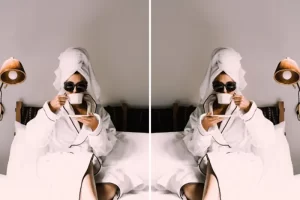
Depending on how your skin feels – and how you feel – we’ve got just the right mask.
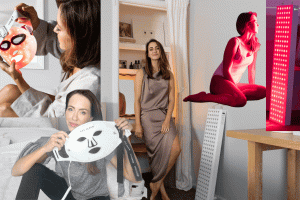
My skincare secret to a seriously glowy and plump complexion.
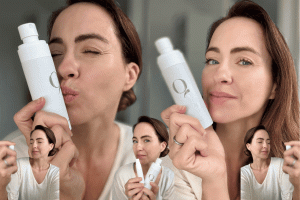
Why TikTok, top derms, and your gym bag are obsessed with Hypochlorous Acid ...
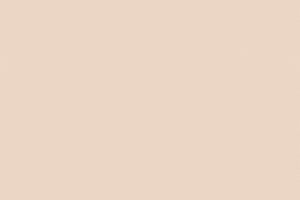
What happens when a runway-approved hair tool hits the shelves and promises to reinvent your weekly blow dry ritual?
